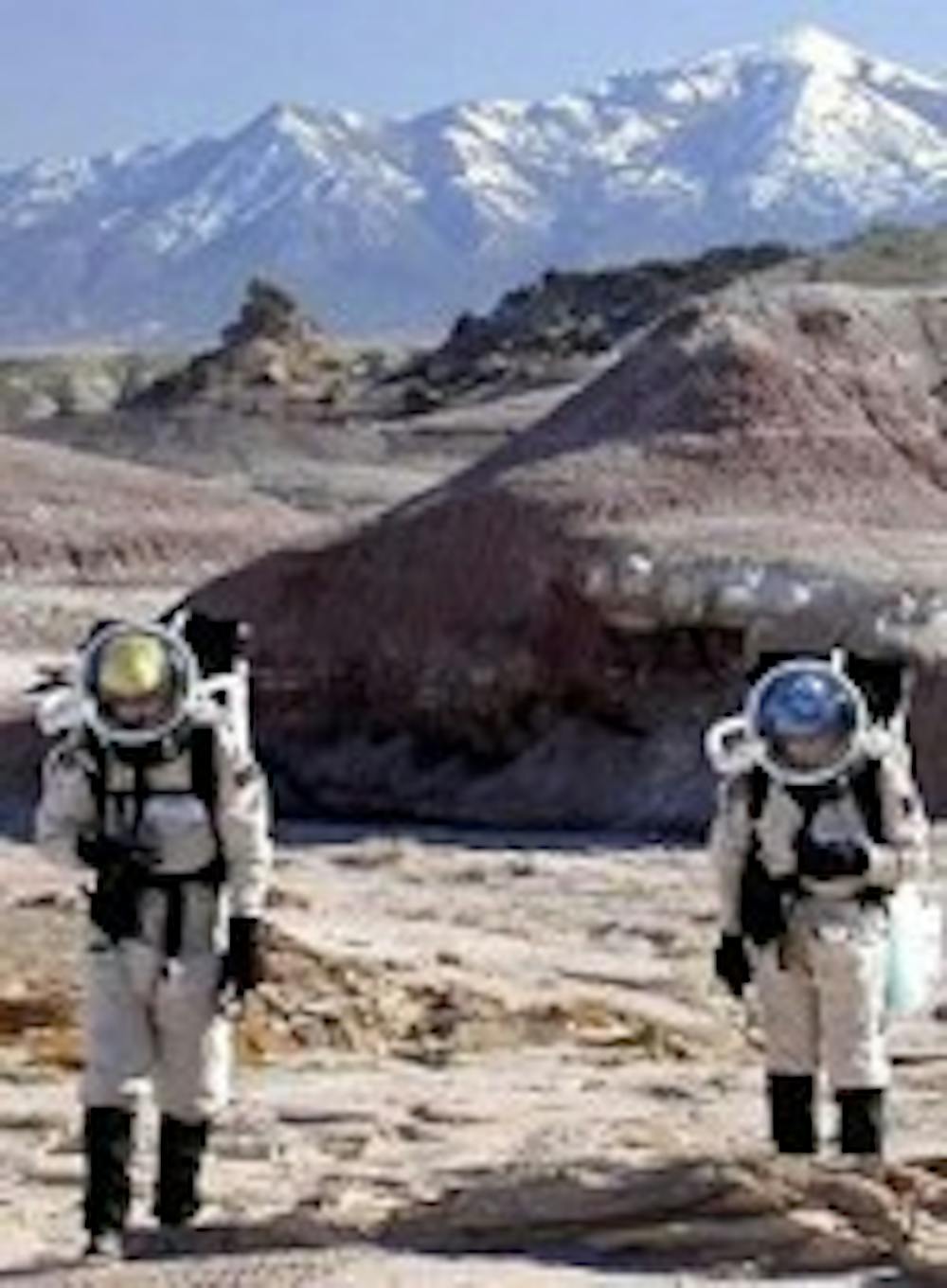While other students spent Spring Break on a beach in Daytona or Cancun, two UB graduate students spent their vacation in a two-story metal cylinder that simulated conditions of Mars.
For two weeks in late March and early April, Brent Gerry and Abbey Semple, doctoral students in the department of geology, replicated the living and working conditions of astronauts who landed on the red planet, all while in Utah.
The UB duo was part of the 16th crew of scientists and engineers to man the Mars Desert Research Station, located a few miles outside Hanksville, Utah. Gerry and Semple were the first geologists to inhabit the station.
"The science of exploration is well on its way," said Gerry. "I was glad to be a part of it."
The focus of the mission was to test the effectiveness of NASA's "Mobile Agents" equipment developed for data gathering and communications transmission on Mars, he said.
The cylindrical station is a model of the shelter and communications hub that future explorers of Mars would utilize.
From the outside, the station looks like "a squat pop can," said Semple, and inside the miniscule structure were sleeping and dining quarters for the six-person crew.
"The kitchen shelves were stocked with Tang," Semple said. "But we were free to leave the base at night and often had dinner at restaurants in Hanksville."
During the two-week experiment, engineers observed Gerry and Semple interacting with voice-activated robotic health support systems inside the space suits.
Gerry and Semple also practiced usage of vehicles designed to tackle Martian terrain, along with utilizing a six-foot robot companion, named "Boudreaux," with photographic eyes. "Boudreaux," Semple said, is a kind of device known as a mobile agent.
"'Mobile Agents' refers to the computer programs built into the all-terrain vehicles, and the backpacks worn by the astronauts that allow information to be shared over a wireless network," Semple said.
"It can be used to alert other astronauts and anyone at the habitat to new developments, or an emergency, from great distances - even Mars," he added.
The Mobile Agent programs allowed Gerry and Semple to send photographs, verbal descriptions of the landscape and diagnostic info from tests done in the field to a receiver located more than four miles away.
"We were able to FTP, or send the pictures and data, to the receiver over a digital wireless connection using voice commands," said Gerry.
Computer engineers monitored their interaction with the technology and modified equipment to be user-friendly.
"New technology was developed every night right before our eyes," said Gerry. "Their job was to get inside our heads to develop reliable interactive instruments for work outside the habitat."
An automated wireless communications system was not the only space-aged idea that became a reality at the station. Gerry and Semple were also introduced to state-of-the-art bathroom technology.
"There were two toilets," said Semple, "one for liquids and the other for solids."
According to Semple, the solid waste toilet that may be used by future space pioneers is called an incinolet. Incinolet users, he said, were instructed to set a coffee-filter-like cup on the trap door in the bottom of the bowl. After filling the cup, users hit a switch that opened the trap door, launching the cup and its contents into a tank where it was incinerated at hundreds of degrees.
A sign on the bathroom wall warns incinolet users not to open the trap door before standing and turning to face the toilet, Semple said, as a precaution against astronauts exposing themselves to heat from the excrement-burning tank below.
A typical day at the station meant Gerry and Semple got out of their bunks at 9 a.m. for debriefing, and the two then donned either a spacesuit - which took more than an hour to get into - or a lighter bio-vest and headset.
Once outside, they performed short missions such as using navigational equipment to map small areas of the desert or filling test-bags with mineral samples.
Both the suits and bio-vests were equipped with voice-operated mobile agent equipment that monitored their health, tracked their locations and helped keep them on schedule - all while recording their observations.
The station hosted six crews when it opened in 2001. The second field season began in November 2002 with the seventh crew and will finish up with Crew 18 in May.





